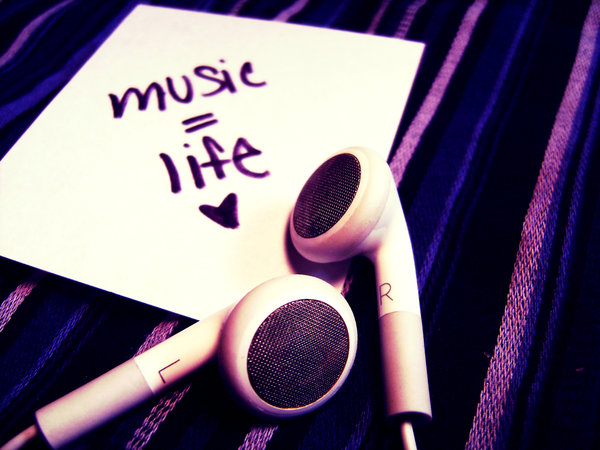 A raaga is one of the melodic modes used in Indian Classical Music. A raga uses a series of five or more musical notes upon which a melody is built. However, the way the notes are approached and rendered in musical phrases and the mood they convey are more important in defining a raga than the notes themselves. In the Indian musical tradition, ragas are associated with different times of the day, and even with seasons. Indian classical music is always set in ragas.
A raaga is one of the melodic modes used in Indian Classical Music. A raga uses a series of five or more musical notes upon which a melody is built. However, the way the notes are approached and rendered in musical phrases and the mood they convey are more important in defining a raga than the notes themselves. In the Indian musical tradition, ragas are associated with different times of the day, and even with seasons. Indian classical music is always set in ragas.
Numerous film songs and ghazals are set in ragas. We have heard stories such as – when Tansen sang raga Megh Malhaar it started raining immediately, when he sang raga Deepak lamps got lit automatically, and sometimes when Tansen sang, wild animals would come and sit at his feet.
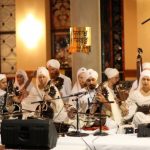 Please recall the famous “Dukh Bhare Din Bite Re Bhaiya” from Mother India (1957) or “Kaare Kaare Badra, Suni Suni Ratiya” from Mera Naam Joker (1970) to enjoy the peacefulness and the passion of Megh Malhaar. “Divane Tum, Divane Hum” from film Bezuban (1962) in Raag Bageshri,”Hamse Aya Na Gaya” from Film Dekh Kabira Roya (1957), “Madhuban Me Radhika Nache re” from film Kohinoor (1960) in raag Hamir, “Zir Zir Barase Sawani Akhiya” from film Ashirwad (1968) in raag Gaur Malhar are some excellent examples how the composers used ragas in their fullest power.
Please recall the famous “Dukh Bhare Din Bite Re Bhaiya” from Mother India (1957) or “Kaare Kaare Badra, Suni Suni Ratiya” from Mera Naam Joker (1970) to enjoy the peacefulness and the passion of Megh Malhaar. “Divane Tum, Divane Hum” from film Bezuban (1962) in Raag Bageshri,”Hamse Aya Na Gaya” from Film Dekh Kabira Roya (1957), “Madhuban Me Radhika Nache re” from film Kohinoor (1960) in raag Hamir, “Zir Zir Barase Sawani Akhiya” from film Ashirwad (1968) in raag Gaur Malhar are some excellent examples how the composers used ragas in their fullest power.
Music has a healing power; it stimulates the pituitary gland, which secretes hormones that affect the nervous system and the flow of blood. When you listen to hard rock with Drums/Congo/Bongo the rate of your heart beats increase in manifold while when you listen to slow and soft music it calms your nerves and takes you to pensive state. The ancient system of Nada Yoga, acknowledges the impact of music on body and mind. Vibrations are produced from sounds to uplift one’s level of consciousness. You should visit Osho Ashram, Pune to experience how vibrations in their resonance can synchronize with our moods. Ragas help fight aging and pain.
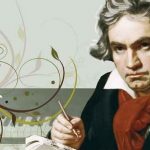 Words don’t express music. Music expresses itself. There is a famous quote by Aldous Huxley. And, Douglas Adams says “Beethoven tells you what it is like to be Beethoven and Mozart tells you what it’s like to be human. Bach tells you what it’s like to be the universe.”
Words don’t express music. Music expresses itself. There is a famous quote by Aldous Huxley. And, Douglas Adams says “Beethoven tells you what it is like to be Beethoven and Mozart tells you what it’s like to be human. Bach tells you what it’s like to be the universe.”
There are some great physicians who treat their patients with musical therapy. Choosing the right kind of music is helpful in promoting health. Negative traits like anger, worries also can be overcome through listening to good music. Depression can be cured by music therapy. When you are feeling low, soft and soothing music is recommended. In order to study the depth nature of impact of Indian classical music on the physiology and disease status of working men and also to assess how far it helps in efficiency and work potential of workers, the well known ‘panchkarma’ practitioner and exponent of ‘Gandharva Music Therapy’, Dr. Gopalkrishna Waghralkar of the Waghralkar’s Hospital & Resarch Institute, Nagpur has launched a project which is sponsored by Bank of Maharashtra. The employees of Bank of Maharashtra in the city work in musical surroundings. Aggrieved customers can also feel better and perhaps they will get better services in its selected branches. Dr. Waghralkar is assisted by a team of other specialization doctors.
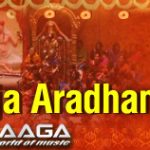 The ancient Hindus had relied on music for its curative role. The chants in Veda Mantras in praise of God have been used as a cure for several disharmonies in individuals as well as in environment. Several sects of ‘Bhakti’ such as Chaitanya, Sampradaya, Vallabha sampradaya have all accorded priority to music. Haridas Swami who was the guru of Tansen in Emperor Akbar’s empire was an astonishing musician. Though very little is known about him, it seems Harodas Swami has healed some individuals through his musical rendering. Legendary classical music maestro Thyagraja brought a dead person alive through his Bilahari composition Naa Jiva Dhaara. The music library at Thanjavur is reported to contain such a treasure on ragas that spells out the application and use of various ragas in fighting common ailments.
The ancient Hindus had relied on music for its curative role. The chants in Veda Mantras in praise of God have been used as a cure for several disharmonies in individuals as well as in environment. Several sects of ‘Bhakti’ such as Chaitanya, Sampradaya, Vallabha sampradaya have all accorded priority to music. Haridas Swami who was the guru of Tansen in Emperor Akbar’s empire was an astonishing musician. Though very little is known about him, it seems Harodas Swami has healed some individuals through his musical rendering. Legendary classical music maestro Thyagraja brought a dead person alive through his Bilahari composition Naa Jiva Dhaara. The music library at Thanjavur is reported to contain such a treasure on ragas that spells out the application and use of various ragas in fighting common ailments.
 Ragas help activating the seven energy Chakras in body. They have the power to stimulate the chakras in right proportion. The activation of chakras allows the Kundalini energy to rise easily and energize and nourish the chakra. It is reported that Kundalini awakening results in deep meditation, enlightenment and bliss. This awakening involves the Kundalini physically moving up from the Muladhar chakra through the central channel to reside within the Sahasrara Chakra at the top of the head. This movement of Kundalini is felt by the presence of a cool or, in the case of imbalance, a warm breeze across the palms of the hands or the soles of the feet. Practitioners of Kundalini awakening have expressed mysterious experiences. A piece of advice – you need a mature and holistic Guru to practice Kundalini meditation.
Ragas help activating the seven energy Chakras in body. They have the power to stimulate the chakras in right proportion. The activation of chakras allows the Kundalini energy to rise easily and energize and nourish the chakra. It is reported that Kundalini awakening results in deep meditation, enlightenment and bliss. This awakening involves the Kundalini physically moving up from the Muladhar chakra through the central channel to reside within the Sahasrara Chakra at the top of the head. This movement of Kundalini is felt by the presence of a cool or, in the case of imbalance, a warm breeze across the palms of the hands or the soles of the feet. Practitioners of Kundalini awakening have expressed mysterious experiences. A piece of advice – you need a mature and holistic Guru to practice Kundalini meditation.
The raga also helps to maintain the chakra in its optimum spin and balance, ensuring a balanced energy supply to different organs that are connected to the specific chakra. My musical Guru Dr. Pandit Parmanand Yadavji says that the raga Shyam Kalyan helps activate the Mooladhara chakra. This chakra enables physical identity, survival, stability, instinctual nature, ambition, and self-sufficiency. The sense governed by Muladhar is smell.
 Raga Yaman has the power to stimulate the Swadishthan chakra that governs our attention. The sense associated with swadhisthana is taste, the sense organ is the tongue and the organs of activity are the sexual organs, kidneys and entire urinary system. Therefore swadhisthana is largely responsible for purification of all bodily fluids through the kidneys, bladder and lymph system, and for the continuation of life through the sex organs and glands of reproduction. It governs the gonads and production of sexual hormones and therefore has a very strong influence upon our moods and emotions. Swadhisthana is also linked to the mobility of our joints and especially the hip joints and pelvic area
Raga Yaman has the power to stimulate the Swadishthan chakra that governs our attention. The sense associated with swadhisthana is taste, the sense organ is the tongue and the organs of activity are the sexual organs, kidneys and entire urinary system. Therefore swadhisthana is largely responsible for purification of all bodily fluids through the kidneys, bladder and lymph system, and for the continuation of life through the sex organs and glands of reproduction. It governs the gonads and production of sexual hormones and therefore has a very strong influence upon our moods and emotions. Swadhisthana is also linked to the mobility of our joints and especially the hip joints and pelvic area
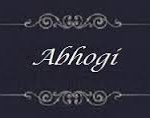 Raga Abhogi helps activate the Solar Plexus (Manipura) chakra and stimulate the digestion process. When the Kundalini enters this Chakra, the Chakra is cleansed, bringing about a change of attitudes and inner transformation. This raga is also known to bring about de-addiction in human beings. It helps one give up vices and impulsive or compulsive habits. This raga helps develop the quality of the water element. This chakra when not activated leads to poor digestion, weight problems, ulcers, diabetes, hypoglycemia, hyperglycemia, arthritis, pancreas, liver or kidney problems, anorexia, bulimia, hepatitis, intestinal tumors, colon disease.
Raga Abhogi helps activate the Solar Plexus (Manipura) chakra and stimulate the digestion process. When the Kundalini enters this Chakra, the Chakra is cleansed, bringing about a change of attitudes and inner transformation. This raga is also known to bring about de-addiction in human beings. It helps one give up vices and impulsive or compulsive habits. This raga helps develop the quality of the water element. This chakra when not activated leads to poor digestion, weight problems, ulcers, diabetes, hypoglycemia, hyperglycemia, arthritis, pancreas, liver or kidney problems, anorexia, bulimia, hepatitis, intestinal tumors, colon disease.
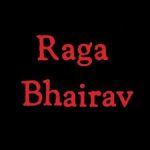 The ragas Bhairav and Durga have a power of attaining divine bliss and protection. Both help activate
The ragas Bhairav and Durga have a power of attaining divine bliss and protection. Both help activate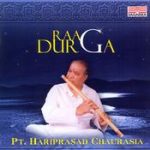 the Anahat (Heart) chakra. When the Kundalini touches the heart chakra, the person experiences spiritual powers. Raga Durga boosts self-confidence and helps develop the quality of the air element. These ragas also enhance the Divinity and Immunity in children. The Heart Chakra is the home of emotional processing. In a sense, the Heart Chakra is all about self-less love and compassion. The heart processes our emotions for us. We grieve and mourn and equally celebrate and laugh raucously, from the heart.
the Anahat (Heart) chakra. When the Kundalini touches the heart chakra, the person experiences spiritual powers. Raga Durga boosts self-confidence and helps develop the quality of the air element. These ragas also enhance the Divinity and Immunity in children. The Heart Chakra is the home of emotional processing. In a sense, the Heart Chakra is all about self-less love and compassion. The heart processes our emotions for us. We grieve and mourn and equally celebrate and laugh raucously, from the heart.
The Raga Jayjaywanti helps to activate the Vishuddhi (Throat) chakra, the controller of the sensory organs. This raga also develops the quality of the air element and the expression of voice, and helps make one’s personality loving. This chakra makes us expressive. It is our communication center in body. It’s important to remember, however, that communication is not just about you talking but it’s also about listening. An imbalanced throat chakra can display itself in many ways. Some signs of imbalance are lying, arrogance, talking too much, being manipulative, fear and timidity.
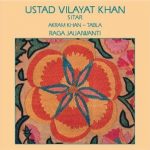 The Raga Bhup helps purify and open the Third Eye (Ajana) chakra. It helps relieve tensions, anger and mental fatigue. The mood created by this Raga helps the Kundalini pass through the Agnya chakra and enter the Sahasrara in the limbic area of the brain. Third Eye Chakra is the 6th Chakra and is responsible to what we refer to as “the sixth sense”. The Chakra connects us to our internal intuitions and is responsible for the sharp senses, the ability to read the future and receive non-verbal messages. Through the Third Eye we communicate with the world and can even receive messages from the past and from the future. It grants us our sense of observation.
The Raga Bhup helps purify and open the Third Eye (Ajana) chakra. It helps relieve tensions, anger and mental fatigue. The mood created by this Raga helps the Kundalini pass through the Agnya chakra and enter the Sahasrara in the limbic area of the brain. Third Eye Chakra is the 6th Chakra and is responsible to what we refer to as “the sixth sense”. The Chakra connects us to our internal intuitions and is responsible for the sharp senses, the ability to read the future and receive non-verbal messages. Through the Third Eye we communicate with the world and can even receive messages from the past and from the future. It grants us our sense of observation.
 Ragas Darbari and Bhairavi are helpful in activating our Sahasrara (Crown) chakra. The notes of these ragas help relax and calm the emotionally-related limbic area. When the Kundalini energy reaches this chakra, soothes and nourishes the Sahasrara chakra and the brain. The result is that one feels, joyous, energetic, peaceful and relieved of tension and depression. The crown chakra is the center for trust, devotion, inspiration, happiness, and positivity. It’s also the center for deeper connection with you and deeper connection with a force of life that is greater than us.
Ragas Darbari and Bhairavi are helpful in activating our Sahasrara (Crown) chakra. The notes of these ragas help relax and calm the emotionally-related limbic area. When the Kundalini energy reaches this chakra, soothes and nourishes the Sahasrara chakra and the brain. The result is that one feels, joyous, energetic, peaceful and relieved of tension and depression. The crown chakra is the center for trust, devotion, inspiration, happiness, and positivity. It’s also the center for deeper connection with you and deeper connection with a force of life that is greater than us.
Ragas in Hindustani classical music have relation to special time of a day and different seasons as well. Seasonal ragas can be performed any time (day or night) during that season. Raga Deepak is related to summer; Megh and Miyan ki Malhar are for the rainy season; Malkauns and Puriya Dhanashree are the ragas for autumn; the roughness of winter is conveyed best through Bhairav, another name for Siva – the god of destruction; and Raag Hindola expresses spring, the season of vitality and romance. These days, the commercial aspect has set in violation of singing particular rag at particular time. Artists and program managers have relaxed rules. But, if you want to enjoy a raga in holistic fashion do listen or practice it at the right time and right season to enjoy its essence.
Seasonal ragas can be performed any time (day or night) during that season. Raga Deepak is related to summer; Megh and Miyan ki Malhar are for the rainy season; Malkauns and Puriya Dhanashree are the ragas for autumn; the roughness of winter is conveyed best through Bhairav, another name for Siva – the god of destruction; and Raag Hindola expresses spring, the season of vitality and romance. These days, the commercial aspect has set in violation of singing particular rag at particular time. Artists and program managers have relaxed rules. But, if you want to enjoy a raga in holistic fashion do listen or practice it at the right time and right season to enjoy its essence.













































